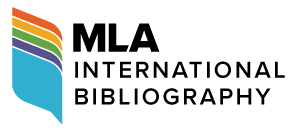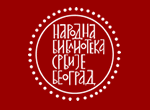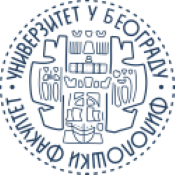The Myth of Leda and the Swan Observed through the Prism of Rubén Darío ("Leda") and Delmira Agustini ("El cisne")
DOI:
https://doi.org/10.18485/beoiber.2021.5.1.4Resumen
The literary movement modernismo originated in Spanish America and gave birth to very important poets in Spanish American literature, bringing about novelties in poetry. Topics originating from classical history and mythology, Eastern civilizations and pre-Hispanic America were treated in an original way, which is one of its main novelties. That is also the topic of this paper, which considers the treatment of the Greek myth from the point of view of Nicaraguan poet Rubén Darío (1867–1916) and Uruguayan poet Delmira Agustini (Delmira Agustini, 1886–1914). The myth in question is about Leda and the swan, and the corpus includes the poems "Leda" ("Leda") written by Darío and "The Swan" ("El cisne") written by Agustini. The aim of this article is to point out the similarities and differences in the treatment of the aforementioned myth. Bearing in mind that Delmira Agustini is a part of the second generation of modernists, the so-called postmodernists, and Ruben Dario is the most important representative of modernismo at its peak, it is interesting, on one hand, to compare their interpretations and visions of this Hellenic myth, and on the other hand, to point out the extent to which mythological and symbolist elements are adopted, surpassed and, ultimately, matched in selected poems. Their interpretations of this myth differ greatly, and we came to this conclusion through a systematic analysis of the mentioned poems.
Key words: Rubén Darío, Delmira Agustini, Greek mythology, Leda, swan.
Referencias
Agustini, Delmira. «El cisne.» Poesías completas. Magdalena García Pinto (ed.). Madrid: Cátedra, 2000. 255–257. Impreso.
Beaupied, Aída. «Otra lectura de ʻEl cisneʼ de Delmira Agustini.» Letras Femeninas 22.1/2 (1996): 131–142. JSTOR. Web. 13.12.2019.
Castillo, Jorge Luis. «Delmira Agustini o el modernismo subversivo.» Chasqui: revista de literatura latinoamericana 27.2 (1998): 70–84. JSTOR. Web. 15.12.2019.
Cuello Privitera, Tatiana. «El símbolo del cisne en Rubén Darío.» Revista de Literaturas Modernas 47.1 (2017): 135–150. Web. 20.4.2021.
Darío, Rubén. «Leda.» Cantos de vida y esperanza, los cisnes y otros poemas. Francisco J. Díez de Revenga (ed.). Salamanca: Ediciones Almar, 2001. 120–121. Impreso.
―. «Pórtico». Poesías completas. Magdalena García Pinto (ed.). Madrid: Cátedra, 2000. 223. Impreso.
Hernández, Alexander. «La evolución del cisne en la poesía de Rubén Darío.» Realidad 145–146 (2015): 73–88. Web. 30.11.2019.
Lanieri, Morena Carla. «El imaginario erótico femenino en Delmira Agustini y Alfonsina Storni.» La penna di venere: escritture dell'ammore nelle culture iberiche. Atti del XX Convegno [Associazione Ispanisti Italiani]. Vol. 1. Domenico Antonio Cusato e Loretta Frattale (coord.). Firenze: Andrea Lippolis Editore, 2002. 421–434. Web. 27.11.2019.
Le Corre, Hervé. Poesía hispanoamericana posmodernista. Madrid: Editorial Gredos, 2001. Impreso.
Lodato, Rosemary C. Beyond the Glitter: The Language of Gems in Modernista Writers Ruben Dario, Ramon Del Valle-Inclan, and Jose Asuncion Silva. Lewisburg: Bucknell University Press, 1999. 109–118. Web. 5.12.2019.
Mártinez Cuadrado, Jerónimo. «El cisne, leit-motiv de la poesía parnasiana, simbolista y modernista.» Anales de Filología Francesa 10 (2001–2002): 83–99. Web. 25.4.2021.
Molloy, Sylvia. «Dos lecturas del cisne: Rubén Darío y Delmira Agustini.» Revista de la Universidad de México 29 (1983): 14–18. Web. 12.12.2019.
Oviedo, José Miguel. Historia de la literatura hispanoamericana. Postmodernismo, vanguardismo, regionalismo. Tomo III. Madrid: Alianza Editorial, 2001. Impreso.
Pedraza Jiménez, Felipe B. Manual de la literatura hispanoamericana. Modernismo. Tomo III. Pamplona: Cénlit Ediciones, 2005. Impreso.
Pleitez Vela, Tania. «Delmira Agustini, transitando y superando la órbita dariana.» Mitologías hoy 13 (2016): 83–100. Web. 15.11.2019.
Descargas
Publicado
Número
Sección
Licencia
Derechos de autor 2021 Tamara Kedić

Esta obra está bajo una licencia internacional Creative Commons Atribución-CompartirIgual 4.0.
Aquellos autores/as que tengan publicaciones con esta revista, aceptan los términos siguientes:
- Los/las autores/as conservarán sus derechos de autor y garantizarán a la revista el derecho de primera publicación de su obra, el cuál estará simultáneamente sujeto a la Licencia de Reconocimiento-CompartirIgual 4.0 Internacional (CC BY-SA) que permite a terceros compartir la obra siempre que se indique su autor y su primera publicación en esta revista.
- Los/las autores/as podrán adoptar otros acuerdos de licencia no exclusiva de distribución de la versión de la obra publicada (p. ej.: depositarla en un archivo telemático institucional o publicarla en un volumen monográfico) siempre que se indique la publicación inicial en esta revista.
- Se permite y recomienda a los/las autores/as difundir su obra a través de Internet (p. ej.: en archivos telemáticos institucionales o en su página web) antes y durante el proceso de envío, lo cual puede producir intercambios interesantes y aumentar las citas de la obra publicada. (Véase El efecto del acceso abierto).















